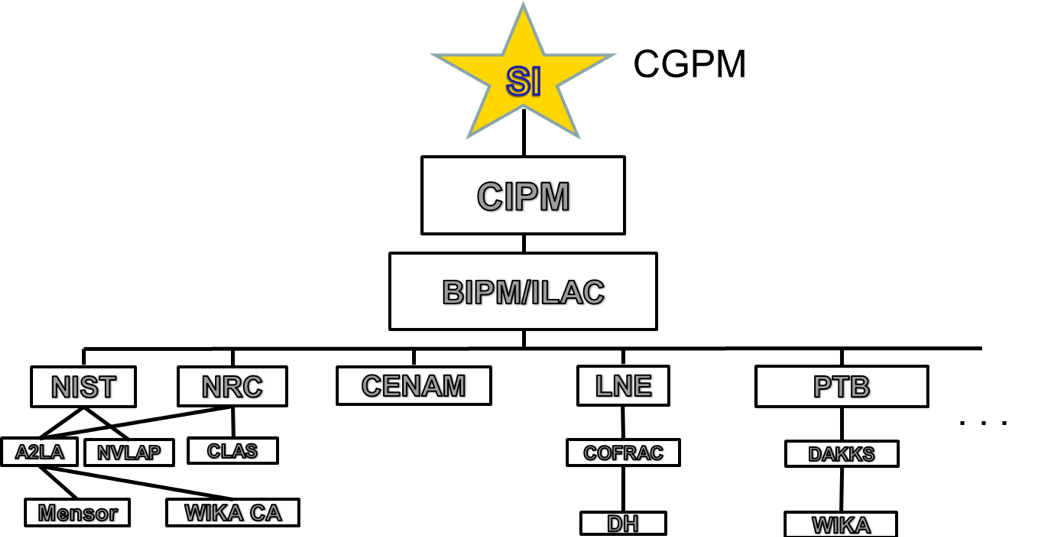A lot of confusion exists around the ‘traceability’ of calibrations. With multiple agencies, countries and standards, this leads to a misunderstanding for customers and manufacturers alike!The essence of a calibration is to ensure accurate measurements. The foundation of this is what the calibration is ultimately referenced to. Calibrating a device to determine the accuracy relies on the reference instrument it is calibrated with and the traceability of the reference’s calibration. Almost without exception, precision measurement traceability is compared to the International System of Units (SI). The SI system defines the seven fundamental base units for all measurements.
Some History and Alphabet Soup
The origins of SI began with the signing of the Metre Convention in 1875 by representatives of 17 nations. This treaty only addressed mass and length, but it created the International Bureau of Weights and Measures (BIPM), which administrates the SI system and its dissemination. Part of the BIPM is the International Committee for Weights and Measures (CIPM), which creates the formal definition of the SI units. Only National Metrology Institutes (NMIs) can be members of the BIPM and CIPM.
One of the obvious purposes of the BIPM is to ensure that all of the NMIs are referenced to the fundamental SI units. Maybe not so obvious is that it provides a system for mutual recognition of that traceability between member NMIs. This is primarily done through the International Laboratory Accreditation Conference (ILAC).
Traceability Chain Through ILAC
ILAC is involved with the assessment and accreditation of calibration and testing laboratories using ISO/IEC 17025. ILAC is not an accreditation body. Accreditation bodies, such as NMIs, are signatories to the ILAC Mutual Recognition Arrangement (MRA), which uses peer evaluation to assess and accredit laboratories.
NMIs are not the only signatories to ILAC’s MRA though. These are also most of the organizations that accredit laboratories to 17025. In the United States, some of those organizations are A2LA, NVLAP, ANAB, etc. These are all Accredited Conformity Assessment Bodies that are peer reviewed through ILAC. These are the organizations that can accredit laboratories for calibrations. They also accept the results of each other’s accredited laboratories.
The general structure of traceability is like this:

From this diagram, you can see that Mensor is accredited to 17025 through A2LA. However, it is somewhat misleading because although the vast majority of our standards are traceable through NIST, we have some standards that are traceable though other NMI’s such as the LNE in France, PTB in Germany and NPL in England. Since they are all ILAC signatories and mutually recognized, all of our calibrations are traceable to the SI units.
Related Reading:


